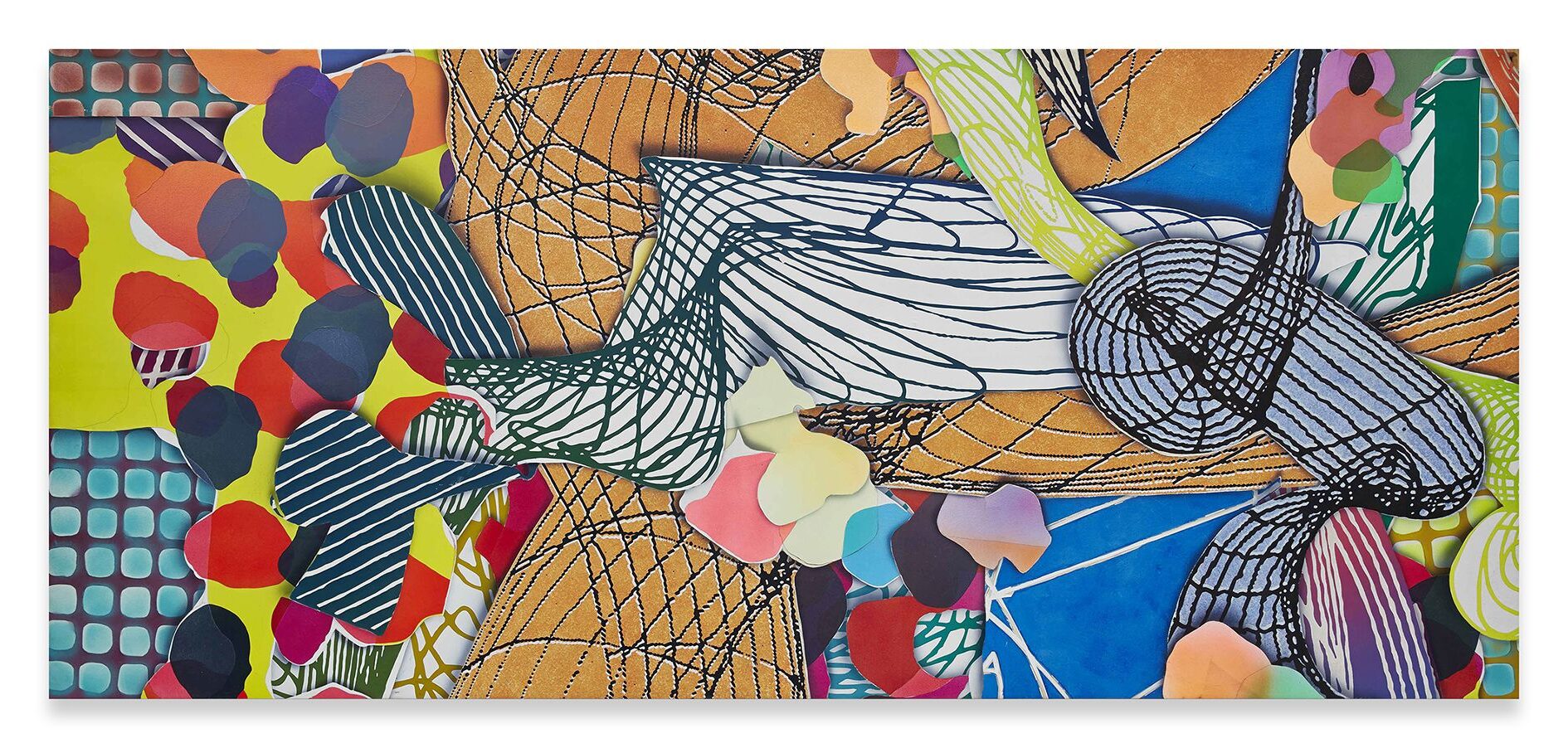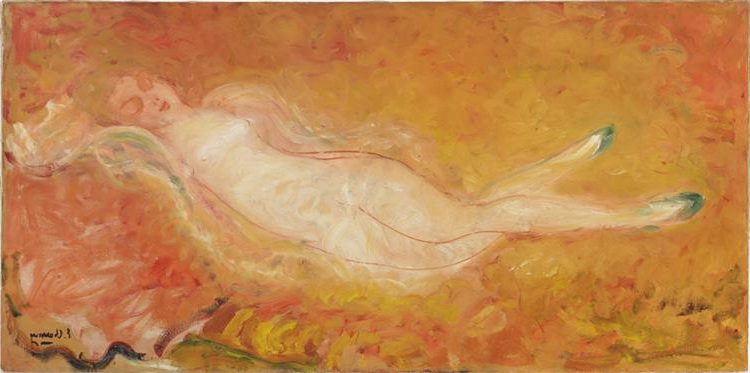Frank Stella: Painter Revolutionizing Abstract Art Since the 1960s
Born: May 12, 1936, Malden, Massachusetts, U.S.
Death: May 4, 2024, New York City, U.S.
Art Movement: Modernism, Minimal Art, Abstract Expressionism, Geometric Abstraction
Nationality: American
Influenced By: Franz Kline and Jackson Pollock
Institution: Phillips Academy and Princeton University
Frank Stella: Painter Revolutionizing Abstract Art Since the 1960s
Life and Education of Frank Stella
Frank Stella‘s journey from Massachusetts to becoming a renowned artist was shaped by his educational experiences and personal challenges. His time at prestigious institutions established his foundation in art, while health issues later in life tested his resilience.
Early Years and Oberlin College
Frank Philip Stella was born on May 12, 1936, in Malden, Massachusetts. His artistic talents emerged early in his youth, leading him to pursue formal education in the arts.
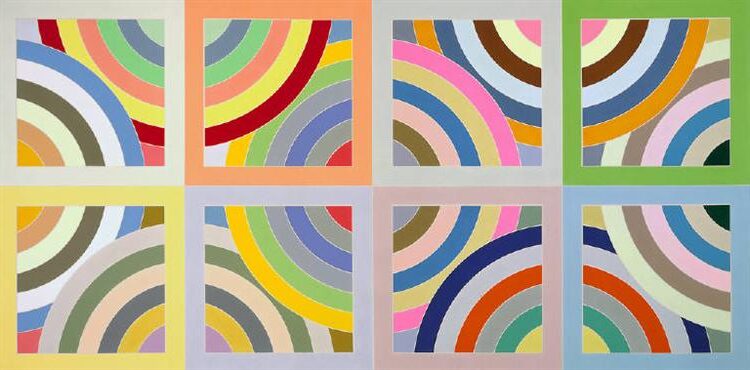
Tahkt-I-Sulayman Variation II, 1969, by Frank Stella
Stella attended Phillips Academy in Andover, Massachusetts, where he studied painting and developed his technical skills. This preparatory education proved crucial for his artistic development.
After graduating from Phillips Academy, Stella enrolled at Princeton University rather than Oberlin College. At Princeton, he focused on history and received his Bachelor of Arts degree in 1958.
During his university years, Stella began forming the ideas that would later influence his minimalist approach to art. Princeton’s intellectual environment encouraged his exploration of artistic concepts.
Health and Personal Struggles
After establishing himself in New York’s art scene, Stella faced several personal challenges throughout his career. His move to New York after Princeton proved pivotal for his artistic development.
Health issues, including a battle with lymphoma, tested Stella’s resilience. Despite these medical challenges, he continued to create and innovate throughout his career.
Stella’s personal struggles influenced his artistic expression but never deterred his productivity. His determination to overcome health obstacles demonstrated his commitment to his craft.
On May 4, 2024, Frank Stella passed away, just days before his 88th birthday. His artistic legacy continues to influence contemporary artists and art movements around the world.
Artistic Evolution and Major Works
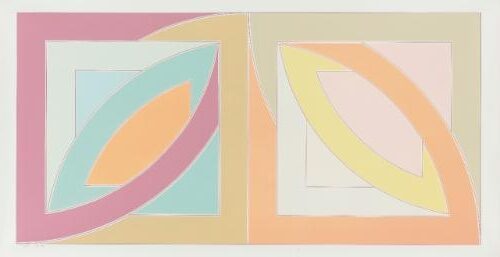
Bonne Bay, 1971, by Frank Stella
Frank Stella’s artistic journey spans decades of innovation and experimentation. His work evolved from stark minimalism to complex three-dimensional forms, pushing the boundaries of painting and sculpture throughout his career.
Black Paintings and Stripe Paintings
Stella burst onto the art scene in the late 1950s with his groundbreaking “Black Paintings.” These works featured uniform black stripes separated by thin lines of unpainted canvas. The paintings rejected the emotional expressionism of the era in favor of a methodical approach where “what you see is what you see.”
In 1960, Stella expanded his palette with the “Aluminum” and “Copper Paintings.” These metallic-colored stripe paintings followed geometric patterns dictated by the shape of the canvas. Works like “Tomlinson Court Park” (1959) and “Die Fahne Hoch!” (1959) established him as a leading figure in Minimalism.
The “Benjamin Moore” series followed, using bright commercial house paint in precise patterns. This work helped define Post-Painterly Abstraction and influenced Color Field Painting.
Protractor Series and Three-Dimensionality
By the mid-1960s, Stella began his vibrant “Protractor Series,” marking a significant shift in his work. Named after the semicircular measuring tool, these paintings featured interlocking arcs and circles in bright colors on shaped canvases.
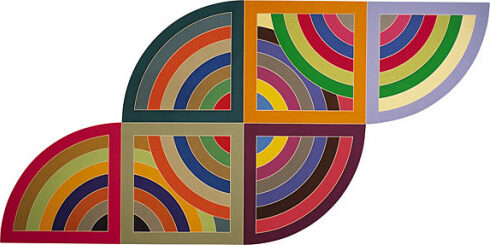
Harran II, 1967, by Frank Stella
Works like “Harran II” (1967) and “Damascus Gate” (1970) showed Stella’s growing interest in complex color relationships and spatial depth. The series represented a clear departure from minimalism toward more elaborate compositions.
During this period, Stella’s canvases began to take on three-dimensional qualities. He moved beyond flat surfaces, creating works with projecting elements and layered planes. This transition challenged traditional boundaries between painting and sculpture.
Transition into Sculpture and Gemini Works
In the 1970s and 1980s, Stella fully embraced three-dimensionality with his “Polish Village” and “Brazilian” series. These works combined painting with collage and construction techniques using materials like felt, wood, and metal.
His collaboration with Gemini G.E.L. print workshop produced groundbreaking mixed-media prints and multiples. These works, like his “Moby Dick” series, featured bold colors and protruding elements that literally jumped off the wall.
By the 1990s, Stella was creating large-scale sculptures and architectural installations. Works like “The Pequod Meets the Bachelor” (1988) showed his complete transformation from minimal painter to sculptor of complex, dynamic forms. Today, at over 80 years old, Stella continues to evolve his practice and influence contemporary art.
Legacy and Notable Exhibitions
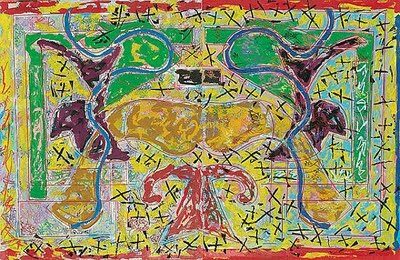
Libertina, 1995, by Frank Stella
Frank Stella’s impact on the art world extends far beyond his innovative paintings and sculptures. His work has been featured in prestigious museums worldwide, influencing generations of artists and securing his place in art history.
Influence on Contemporary Art
Stella revolutionized abstract art with his minimalist approach and precise geometric forms. His “Black Paintings” series challenged traditional notions of painting and helped establish minimalism as a significant movement. Many contemporary artists cite Stella’s methodical exploration of materials and form as influential to their practice.
His transition from flat paintings to three-dimensional works broke boundaries between painting and sculpture. This pioneering approach inspired artists to think beyond conventional media limitations.
Stella’s technical innovations with industrial materials and computer modeling in the 1990s and 2000s demonstrated his continuous evolution as an artist. His willingness to experiment throughout his career serves as a model for artistic growth and adaptation.
Showcases at the Museum of Modern Art and Whitney Museum
At just twenty-three years old, Stella was the youngest artist included in the Museum of Modern Art’s prestigious “Sixteen Americans” exhibition in 1959. This early recognition catapulted him to fame and established him as a leading figure in post-war abstract art.

Black Adder (V Series), 1968, by Frank Stella
The Whitney Museum of American Art hosted Stella’s first retrospective in 1970, followed by another major retrospective in 1987. These exhibitions highlighted his artistic development and growing experimentation with form.
In 2015, the Whitney organized “Frank Stella: A Retrospective,” a comprehensive look at his six-decade career. The exhibition later traveled to the Modern Art Museum of Fort Worth and the de Young Museum in San Francisco, cementing his international reputation.
Permanent Collections and the Sculpture Garden
Stella’s works are held in major permanent collections worldwide. The National Gallery of Art in Washington D.C. houses significant pieces that showcase his artistic evolution from minimalist paintings to complex sculptures.
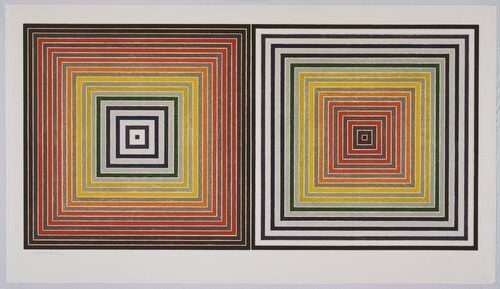
Double Gray Scramble, 1973, by Frank Stella
The Museum of Modern Art in New York maintains an extensive collection of his works, including pieces from his groundbreaking “Black Paintings” series. These works remain influential examples of minimalist abstraction.
His large-scale sculptures have been installed in public spaces internationally. Notable examples include installations at the National Gallery of Art Sculpture Garden and prominent locations in New York City.
Several international museums feature dedicated spaces for Stella’s work, reflecting his global significance. His pieces continue to attract visitors and spark dialogue about abstraction, space, and artistic innovation.
Frequently Asked Questions
Frank Stella’s work raised many questions about art and technique. His influential career changed painting and sculpture in important ways, leading to curiosity about his methods, impact, and the value of his creations.
What are the characteristics that distinguish Frank Stella’s Black Paintings?
Frank Stella’s Black Paintings, created in the late 1950s, feature geometric patterns of black paint separated by thin unpainted lines. These works use house paint applied with a brush on canvas.
They display remarkable precision, symmetry, and rejection of expressive brushwork. Unlike the emotional abstract expressionism popular at the time, Stella’s Black Paintings emphasize the flatness of the canvas.
Each painting follows a strict pattern that extends to the edges of the canvas, eliminating any sense of foreground or background.
How did Frank Stella impact the development of minimalism in modern art?
Stella paved the way for Minimalism through his famous statement “What you see is what you see,” rejecting symbolic or emotional interpretations of art. His work demonstrated that paintings could be objects themselves rather than representations.
By removing expressionistic elements and focusing on geometry and pattern, Stella helped establish key minimalist principles. His shaped canvases challenged traditional painting formats and influenced how artists thought about the physical properties of artwork.
Stella’s methodical approach and industrial materials inspired younger minimalist artists to explore similar concepts in their work.
What is the range of prices typically seen for Frank Stella’s work at auction?
Frank Stella’s auction prices vary widely based on the period, size, and significance of the work. Major paintings from his early career can sell for millions of dollars.
His Black Paintings and Protractor series pieces typically command the highest prices, sometimes exceeding $5 million for important examples. Mid-career works generally sell in the $100,000 to $2 million range.
Prints and smaller works are more accessible, with prices ranging from $5,000 to $50,000 depending on rarity and condition.
How extensive is Frank Stella’s body of artistic work?
Frank Stella produced thousands of works across a career spanning more than six decades. His output includes paintings, prints, sculptures, and architectural projects.
Stella worked in distinct series, creating groups of related pieces that explored specific concepts. Major series include the Black Paintings, Aluminum Paintings, Protractor series, Polish Villages, and his later large-scale sculptural works.
His printmaking alone comprises over 300 different editions, making him one of the most prolific printmakers among major contemporary artists.
What is the relationship between Joseph Stella and Frank Stella?
Despite sharing the same last name, Frank Stella and Joseph Stella have no family relationship. This is a common source of confusion in art history.
Joseph Stella (1877-1946) was an Italian-American Futurist painter known for vibrant, dynamic works like “Brooklyn Bridge.” Frank Stella (born 1936) emerged decades later with his minimalist geometric paintings.
Their artistic styles differ dramatically, with Joseph embracing colorful expression while Frank initially rejected it in favor of systematic approaches.
How has Frank Stella’s art evolved over the course of his career?
Frank Stella began with the minimalist Black Paintings. Then, he introduced color in his Aluminum and Copper series. His early work emphasized flatness and geometric precision.
By the 1970s, Stella shifted to more complex forms with his Protractor series and Polish Village works. He gradually moved from flat paintings to relief elements that projected from the wall.
His later career saw a dramatic turn toward fully three-dimensional sculptures and installations. These colorful, dynamic works contrasted sharply with his early minimalism, showing his willingness to reinvent his approach repeatedly.

